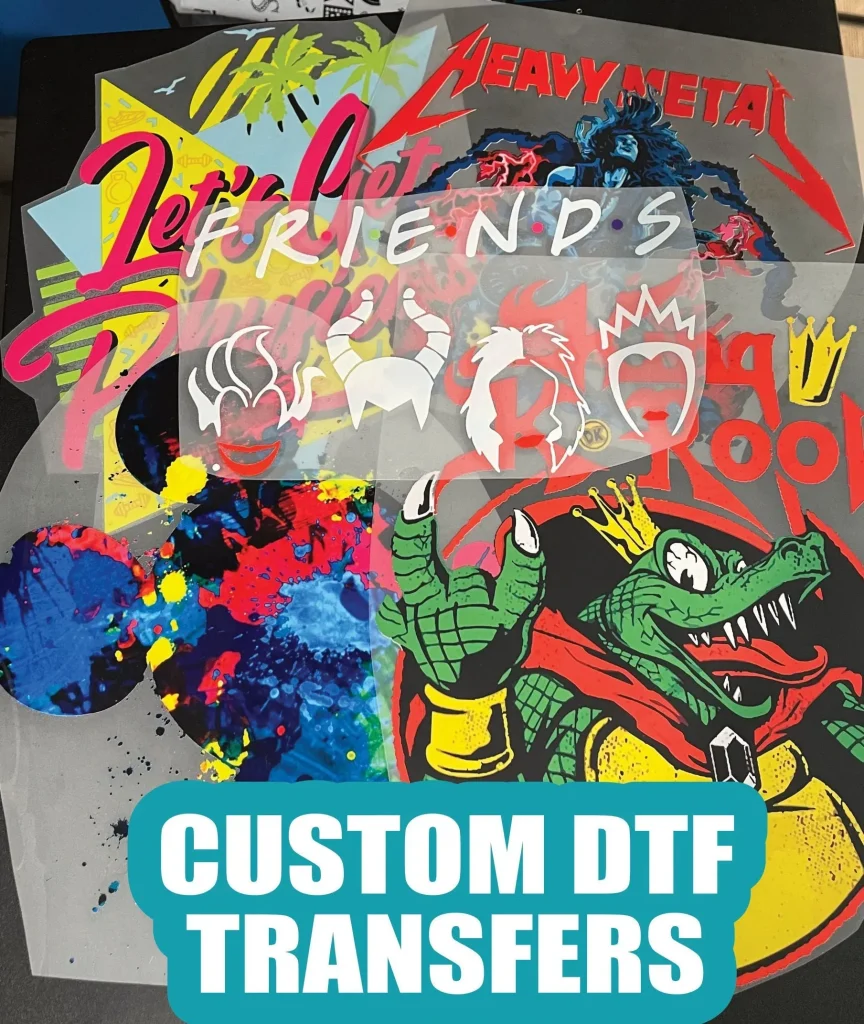In recent years, DTF transfers have revolutionized the custom printing landscape, offering a robust solution for both hobbyists and entrepreneurs eager to create unique designs. This technique, known as Direct to Film printing, involves transferring vibrant, high-quality images onto various fabrics, making it ideal for personalized apparel or promotional items. With its growing popularity, mastering DTF transfers can unlock a world of creative possibilities, whether you’re starting a heat press business or simply crafting custom designs for friends and family. In this guide, we will delve into essential DTF tips for beginners, ensuring you’re well-equipped to embark on your DTF projects with confidence. Understanding the nuances of this innovative transfer method, including optimal heat press settings for DTF, will empower you to produce professional-quality results every time.
Direct to Film printing, commonly referred to as DTF, represents a modern approach to custom transfer printing that has gained significant traction among creatives. This versatile method allows you to print intricate designs onto films that can then be applied to various materials, resulting in vibrant and durable clothing and accessories. Known for its flexibility and ease of use, DTF printing is perfect for those looking to explore custom textile applications, making it a go-to choice for beginners and experienced users alike. Whether you’re working on straightforward projects or more elaborate designs, understanding the essentials of DTF will set you up for success and creativity. As the world of custom transfer options expands, embracing techniques like heat press settings for DTF can help achieve exceptional results.
Understanding the Basics of DTF Printing
DTF printing, or Direct to Film printing, is a revolutionary method that allows for high-resolution images to be printed onto a special film. This film is then transferred onto various fabrics using heat and pressure, making it an ideal choice for customizing apparel. Understanding the fundamentals of DTF transfers is crucial for any beginner looking to navigate this vibrant field. This method not only produces bright colors but also boasts durability, thus making it a preferred option for both individual crafters and commercial businesses.
One of the standout features of DTF printing is its capability to work with diverse fabrics, including something as common as cotton or as unique as polyester blends. This versatility means that DTF printing can cater to various needs—whether you are creating custom t-shirts, embroidery, or even unique items like tote bags. By mastering the fundamental concepts of DTF prints, beginners can set themselves up for success, ensuring that their projects achieve the desired outcome.
Frequently Asked Questions
What are DTF transfers and how do they work?
DTF transfers, or Direct to Film transfers, involve printing designs onto a specialized film that is then heat-pressed onto fabric. DTF printing offers vibrant colors and durability, making it a versatile choice for customizing apparel across various materials including cotton and polyester. By understanding the process, beginners can produce high-quality prints effectively.
What are the best materials for DTF printing?
When starting with DTF transfers, it’s essential to choose high-quality DTF films and inks specifically designed for this application. Using the right materials ensures excellent adhesion and a long-lasting finish, significantly impacting the overall quality of your custom transfer printing projects.
How can beginners perfect heat press settings for DTF transfers?
Mastering heat press settings is crucial for successful DTF transfers. Beginners should experiment with temperature and pressure settings on sample fabrics before committing to larger projects. Too high a temperature can damage fabrics, while too low can lead to incomplete transfers. Consulting guides specific to heat press settings for DTF can provide valuable insights.
What are some easy DTF projects for beginners?
Newcomers to DTF printing should start with simple projects like customizing t-shirts or tote bags. These accessible projects help beginners practice and experiment with DTF techniques without overwhelming them. As confidence builds, they can gradually move on to more complex designs.
How can community engagement improve my DTF transfer skills?
Engaging with online communities focused on DTF printing can greatly enhance your skills. By connecting with experienced printmakers, beginners can gain valuable insights, share tips, and learn from others’ experiences, which can significantly improve the quality of their DTF projects.
What resources are available for mastering DTF transfers?
Numerous online resources are available to help beginners master DTF transfers. Blogs like Transfer Superstars and Next Day DTF offer comprehensive guides on DTF printing processes, troubleshooting, and necessary equipment. Exploring these resources can help new users avoid common mistakes and enhance their DTF printing skills.
| Topic | Key Points |
|---|---|
| What Are DTF Transfers? | Printing designs onto film which is transferred onto fabric. Allows vibrant prints on various materials. |
| Recent Developments | DesignBundles.net offers a custom transfer printing service to help beginners. |
| Essential Tips for Beginners | 1. Understand DTF processes for high resolution. 2. Use quality materials. 3. Master heat press settings. 4. Start with simple projects. 5. Engage with the community. |
| Resources for Beginners | Blogs like Transfer Superstars and Next Day DTF offer comprehensive guides. |
Summary
DTF transfers provide an innovative and engaging method for creating customized designs on various materials. As the popularity of DTF transfers increases, understanding the process and utilizing the right tools becomes essential for success. Beginners are encouraged to explore available resources and support communities to enhance their skills and creativity. With the right approach, DTF transfers can transform your creative vision into reality.



